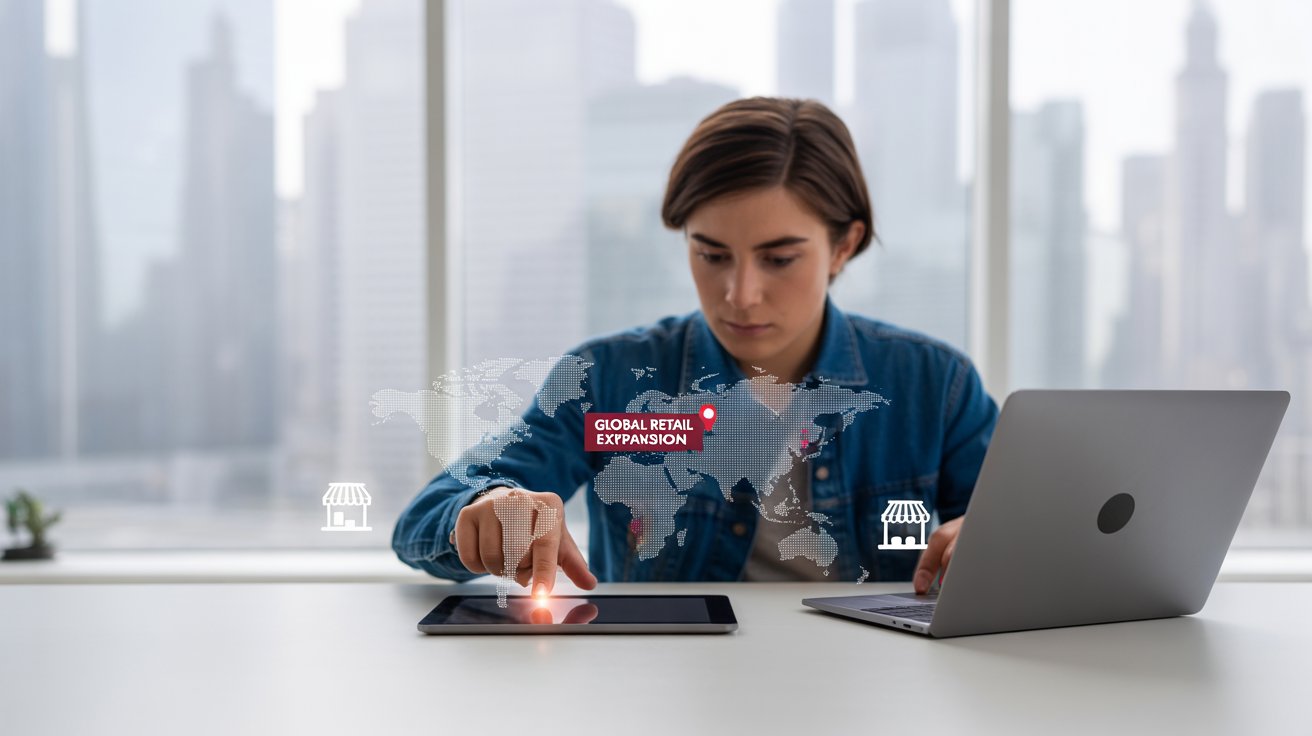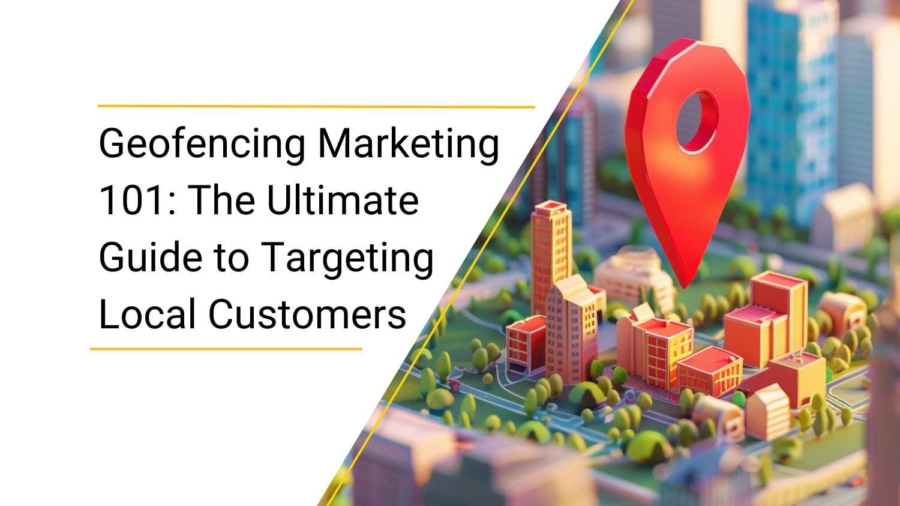What If Your Ads Reached the Right Customers at the Right Time?
Imagine walking past a coffee shop and receiving a limited-time discount on your favorite latte. Or stepping into a mall and instantly getting a personalized sale notification from your favorite store. That’s geofencing marketing in action, a powerful location-based marketing strategy that lets businesses target customers with hyper-relevant ads based on their real-time location.
But how does it work? And how can businesses use it to increase sales, drive foot traffic, and boost engagement?
In this article, we’ll break down:
- What geofencing marketing is and how it works
- Real-world examples of brands using geofencing successfully
- Step-by-step guide to setting up your first campaign
- Privacy concerns and compliance with data regulations
- Future trends shaping the geofencing industry
Let’s dive in.
Table of Contents
ToggleWhat Is Geofencing Marketing?

Geofencing marketing is a location-based advertising strategy that uses GPS, Wi-Fi, RFID, or mobile data to create a virtual boundary (geofence) around a specific geographic location. When a user enters or exits this area, they receive targeted notifications, ads, or promotions on their smartphone.
This hyper-local approach allows businesses to connect with potential customers at the perfect moment, when they’re physically near a store or competitor.
How Does Geofencing Work?
Geofencing relies on three key technologies:
- GPS (Global Positioning System): Uses satellites to track users’ locations with high accuracy outdoors.
- Wi-Fi & Mobile Data: Identifies a user’s approximate position indoors or in areas with poor GPS signals.
- RFID & Bluetooth Beacons: Short-range tracking used for in-store promotions (e.g., sending offers when a customer walks past a product aisle).
Once a business defines its geofence area, the system monitors user movements and triggers ads or notifications based on their proximity to that location.
Why Businesses Use Geofencing Marketing for Higher Sales
1. Increased Foot Traffic & Sales
- 72% of consumers act on location-based ads.
- Burger King’s “Whopper Detour” campaign used geofencing to target McDonald’s customers with a 1-cent Whopper deal when they were near a competitor’s location, leading to 1.5 million app downloads in just nine days!
2. Hyper-Targeted Advertising
- Setting up virtual boundaries is the simple answer to ‘How does geofencing advertising work?’ This technology allows businesses to deliver targeted ads to users in real time based on their physical location. Unlike traditional marketing, which targets broad audiences, geofencing enables hyper-targeted advertising, reaching people who are nearby and more likely to convert.
- Example: Starbucks uses geofencing to send real-time offers to customers near their stores, increasing sales by 16%.
3. Higher Engagement & Personalization
- Consumers are 2.7x more likely to engage with location-based ads compared to generic digital ads.
- Example: Sephora uses geofencing to send loyalty rewards when customers walk into their stores, increasing repeat purchases.
4. Better Customer Insights & Analytics
- Track metrics like foot traffic, dwell time, visit frequency, and customer movement patterns.
- Helps brands optimize ad spend by targeting high-converting locations.
How Are Brands Using Geofencing Marketing?
Retail & E-commerce
- Macy’s uses geofencing to send personalized in-store offers, driving 30% higher engagement rates.
- Amazon Go stores use geofencing to enable seamless “Just Walk Out” checkout experiences.
Restaurants & Food Chains
- Domino’s Pizza sends app notifications to nearby users with real-time discounts, increasing conversion rates.
- Dunkin’ Donuts targeted commuters with geofencing ads at train stations, increasing store visits by 26%.
Events & Entertainment
- Coachella Music Festival uses geofencing to provide real-time updates on performances, schedules, and exclusive VIP offers.
Healthcare & Fitness
- Gyms like Orangetheory send push notifications to inactive members when they’re near a location, encouraging attendance.
- Hospitals & clinics use geofencing to send appointment reminders and wellness tips.
How to Set Up Geofencing Marketing in 5 Simple Steps
Step 1: Define Your Campaign Goals
Determine the primary objective of your geofencing campaign. Are you aiming to drive more foot traffic to your store, increase online sales, or boost engagement within your mobile app? Clearly defining your goal will help shape your geofencing strategy effectively.
Step 2: Select Your Geofence Location
Choose a strategic location for your geofence based on your business type and objectives. Retail stores may benefit from a smaller radius of 500 meters to 1 km, while event promotions or larger businesses may require a broader range of 2-5 km to attract relevant audiences.
Step 3: Select the Right Ad Platform
Choose an advertising platform that aligns with your campaign goals. Google Ads is great for geotargeted PPC campaigns, while Facebook and Instagram Ads work well for social media-based location targeting. Additionally, in-app push notifications can be leveraged to engage mobile users in real time, which would help you set up Geofencing marketing.
Step 4: Create a Compelling and Clear Offer
Craft a persuasive message that encourages immediate action. Your offer should be clear, time-sensitive, and relevant to your audience. Examples include limited-time discounts, exclusive in-store promotions, or personalized deals based on user behavior.
Step 5: Launch & Monitor Performance
Once your campaign is live, track key performance metrics such as click-through rates (CTR), store visits, and overall customer engagement. Use this data to optimize your geofencing strategy, adjusting location targeting, ad creatives, or offers to improve results.
Respecting Privacy & Ethical Boundaries in Geofencing
With increasing data privacy laws, businesses must use geofencing responsibly.
Privacy Concerns:
- Informed Consent: Many consumers may be unaware that their location data is being tracked. Ethical marketing practices involve being upfront about how data is used and giving users the choice to opt in or out.
- Data Security: Companies must safeguard collected location data to avoid security breaches that can lead to data misuse or unauthorized access.
- Intrusiveness: Geofencing, if overused or used indiscriminately, can feel intrusive. A careful balance is necessary to ensure that users don’t feel surveilled.
Best Practices for Ethical Geofencing Marketing:
- Transparency: Businesses should communicate their data collection practices, ensuring consumers understand how their information will be used.
- Respect for Boundaries: Avoiding overly frequent or intrusive notifications is crucial to prevent consumer annoyance and potential backlash.
- Obtain Explicit Consent: Ensure customers opt in to location tracking, providing clear information about how their data will be used.
- Maintain Transparency: Be open about data collection practices, allowing consumers to make informed decisions.
- Limit Intrusiveness: Avoid sending excessive notifications, and ensure that messages provide genuine value to the consumer.
- Data Security: Implement robust security measures to protect collected data from unauthorized access.
Future Trends in Geofencing Marketing
- AI-Powered Geofencing: AI will analyze consumer behavior to predict the best times and places for geofencing ads.
- Augmented Reality (AR) Integration: Retailers will create interactive AR experiences triggered by geofencing.
- 5 G-Powered Location Tracking: Faster data speeds will enable real-time hyper-personalization.
- Blockchain for Data Security: Enhancing consumer trust by securing location data.
Geofencing marketing gives businesses a smart way to connect with customers at just the right moment. Whether you’re driving foot traffic, boosting online sales, or increasing app engagement, a well-planned strategy can make all the difference. By setting clear goals, targeting the right locations, and using compelling offers, you can create a campaign that truly resonates.
At the same time, respecting user privacy and being mindful of ethical considerations is key to building trust. When done right, geofencing isn’t just about marketing—it’s about delivering value to your audience in a way that feels natural and helpful.
By implementing geofencing, businesses can deliver personalized, timely offers that drive higher engagement, foot traffic, and sales. Ready to leverage geofencing for your business? Start small, analyze the data, and optimize for maximum ROI!



Add a Comment
You must be logged in to post a comment